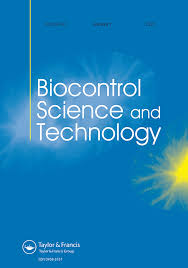Ver ítem
- xmlui.general.dspace_homeCentros e Institutos de InvestigaciónCICVyA. Centro de Investigación en Ciencias Veterinarias y AgronómicasInstituto de Microbiología y Zoología AgrícolaArtículos científicosxmlui.ArtifactBrowser.ItemViewer.trail
- Inicio
- Centros e Institutos de Investigación
- CICVyA. Centro de Investigación en Ciencias Veterinarias y Agronómicas
- Instituto de Microbiología y Zoología Agrícola
- Artículos científicos
- Ver ítem
Prey consumption and development of the indigenous lacewing Chrysoperla externa feeding on two exotic Eucalyptus pests
Resumen
The green lacewing Chrysoperla externa is a widespread species in the Neotropical region that occurs in different habitats. Its presence in Eucalyptus plantations infested with Glycaspis brimblecombei (Hemiptera: Aphalaridae) and Thaumastocoris peregrinus (Hemiptera: Thaumastocoridae) suggests that this lacewing might feed on one or both exotic pest species. In order to evaluate C. externa as a potential biocontrol agent of the eucalyptus pests, the prey
[ver mas...]
The green lacewing Chrysoperla externa is a widespread species in the Neotropical region that occurs in different habitats. Its presence in Eucalyptus plantations infested with Glycaspis brimblecombei (Hemiptera: Aphalaridae) and Thaumastocoris peregrinus (Hemiptera: Thaumastocoridae) suggests that this lacewing might feed on one or both exotic pest species. In order to evaluate C. externa as a potential biocontrol agent of the eucalyptus pests, the prey consumption, development, survival and reproduction of the predator were evaluated under laboratory conditions. C. externa larvae consumed nymphs of both pest species. Developmental time and reproduction parameters of C. externa fed G. brimblecombei were similar to those obtained with the factitious prey Sitotroga cerealella. When fed on T. peregrinus, C. externa showed a delay in its developmental time and the emerged adults were malformed. The results of this study suggest that the green lacewing is a good candidate to be used in augmentative or conservative biological control programmes against G. brimblecombei. Further research is necessary to analyse the potential of this predator as a biocontrol agent under field conditions.
[Cerrar]

Fuente
Biocontrol Science and Technology 29 (12) : 1159-1171 (2019)
Fecha
2019
Editorial
Taylor & Francis
ISSN
0958-3157
1360-0478
1360-0478
Formato
pdf
Tipo de documento
artículo
Palabras Claves
Derechos de acceso
Restringido
 Excepto donde se diga explicitamente, este item se publica bajo la siguiente descripción: Creative Commons Attribution-NonCommercial-ShareAlike 2.5 Unported (CC BY-NC-SA 2.5)
Excepto donde se diga explicitamente, este item se publica bajo la siguiente descripción: Creative Commons Attribution-NonCommercial-ShareAlike 2.5 Unported (CC BY-NC-SA 2.5)

